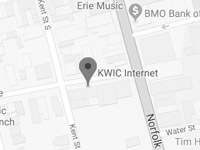Decades ago, the go-to norm for everyday communication was the home phone mounted to a random wall in the kitchen. In business environments, it was much the same thing with employees glued to wired handsets. Fast forward to modern times and, with the power of the internet, there are more options for communication than ever.
But just how has the norm changed in the last decade? As it turns out, the 2010s were driven by innovation and the creation of all-new digital solutions. Today, let’s explore each of them in more detail.
Smartphones and Social Media Reign Supreme
If you thought Facebook and Twitter were critical to the modern communications lifestyle in the late 2000s, their popularity was nothing compared to nowadays in the dawn of a new decade. What’s more, competitors are a dime a dozen, with some, including Instagram, being absorbed by larger companies due to the sheer value of certain platforms. Why is that?
The primary answer is the smartphone. Ever since Steve Jobs pulled out that original iPhone and blew the world’s expectations away, the communications industry as a whole has undergone a massive revitalization. Now, you don’t need to hop on your laptop to catch up with friends, check the news or play games (and no longer do your devices weigh five-plus pounds); this and a whole lot more can be done from a smartphone, many of which come with massive screen and battery sizes to benefit content consumption.
Content is the key word here. Whether streaming, chatting with friends or checking your news feed, it’s everywhere, available instantly. This is why many companies invest in social media marketing to communicate with their audiences – most individuals are on at least one platform if not several. With the world’s info and as many contacts as you want in your pocket, on one screen, it’s easy to see why phone and app-based communications are the go-to standard around the globe.
Better Internet, Better Pricing, Better Benefits
A decade ago, high-speed internet was out of reach for many, especially those in rural areas. While dial-up connections have been available for ages, many modern use cases – social media, streaming video and telecommuting – demanded more. That demand ended up driving change to serve these changing habits.
Today’s most commonly used form of internet is DSL, a dedicated line that offers faster speeds, more bandwidth, and the best possible performance for a variety of use cases. It’s also quite affordable, with providers including us at KWIC Internet focusing on delivering optimal value to suit every budget and application. What’s more, we’re proud to offer high-speed cable and WiFi options to more customers, including those who live in smaller, rural communities. Our offerings are now even more stable, efficient, and reliable, suitable for even the largest households or business teams.
Instant is in, Downtime is Down
We live in an age where the minimum standard is to access vital information, get in touch with others and more at the touch of a finger – or even with a single voice command to your smart speaker. Instant access to the web, your contact lists, saved information and other essentials are treated as a necessity in modern times, when multitasking is critical for a number of lifestyles. From ambitious commuters to growing families and households of multiple students, everyone is benefiting from streamlined access to digital data through hassle-free apps, instant-on computers and tablets, and a vast range of connectivity options including VoIP and ultra-fast WiFi.
The term Internet of Things, or IoT, comes to mind – a collection of software and hardware that not only go hand-in-hand with one another but also communicate with other devices that share a connection. For example, you can now start that essay on your computer, continue it on your tablet on the bus to school, and even submit it digitally via your smartphone just before that deadline. The same seamless relationship applies to the business world as well with collaborative programs such as Google Docs, virtual machines for remote workers to access onsite files securely, and plenty more.
What Does Communication Mean in 2021?
Communication isn’t merely about talking to someone on the phone or messaging a friend conveniently; it’s also about sharing, learning, presenting what you’ve learned, and pulling from a deepening well of knowledge. With the advent of smarter devices, better connection standards, more affordable communications services and constant innovation, it’s only going to get better as time goes on. Who knows what the next 10 years will bring? We can’t wait!
At KWIC Internet, we take great pride in helping drive innovation for affordable, dependable internet and digital phone services for all, along with other specialized services to suit a variety of needs. To learn more, feel free to get in touch with our team today. We can’t wait to hear from you!
